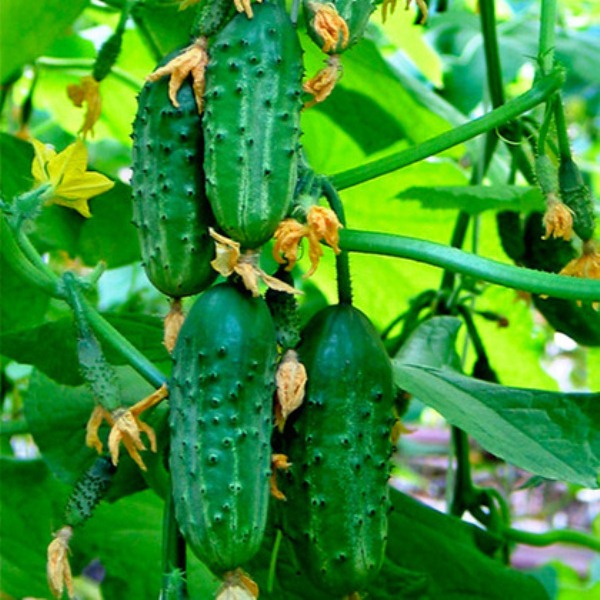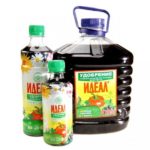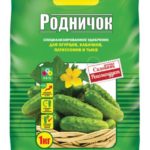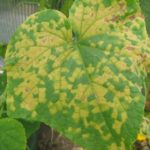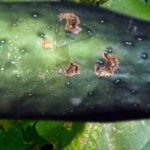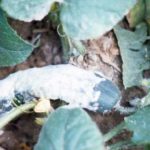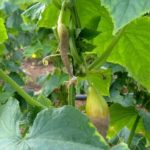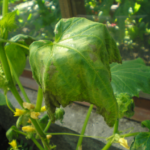Many novice gardeners are unaware of the existence of bush cucumbers. The length of their stems reaches only 30-50 cm. Care for such a culture is simple, the ripening time is short. You can even recognize such plants by name: Baby, Kustovoy, Shorty, etc. Popular in our latitudes enjoys cucumber baby, the fruits of which are universal in use. The description and characteristics of this variety can be found below.
Table of contents
Description and characteristic of a grade of cucumbers Kid
This variety of cucumber refers to early-ripening species, the fruits ripen 40 days after the emergence of shoots. The length of the whip reaches just 30-40 cm, fruits - to 9 cm. Dark green peel has a large lumpy structure with a white edge.
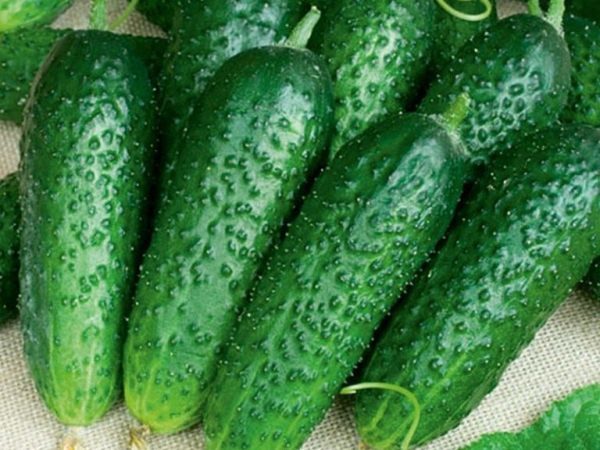
The plant has a good immunity, which allows you to resist downy mildew, the virus of cucumber mosaic and other diseases. Yield is not a record, but stable, with one bush can be removed 2-2,5 kg (about 40-45 Zelentsov). The weight of one medium in size is 80-90 grams.
Advantages and disadvantages
The grade the Kid already managed to estimate and fall in love with domestic gardeners. In their reviews on the properties and qualities of the grown vegetable, the following advantages are more often highlighted:
- ultra early maturitygood germination;
- lovely taste qualities without bitterness;
- universal use (fresh and for winter harvesting);
- fruit well transportedwhile maintaining the presentation;
- in a small area more bushes fit;
- shortened stem length allows you to easily move between rows without fear of damaging a branch or fruit;
- long shelf life without loss of presentation (10 days);
- good resilience before pests and diseases.
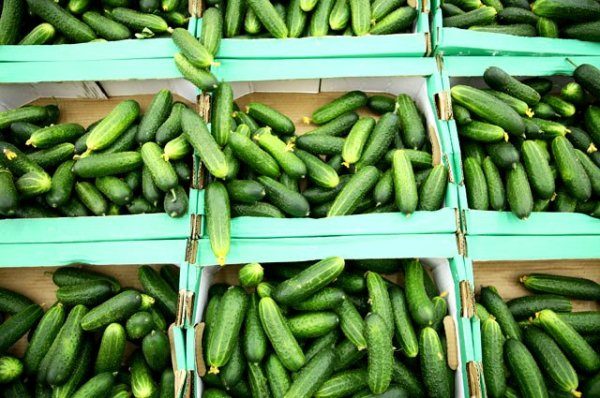
Not devoid of culture and deficiencies, the main of which is intensive fruiting. Harvesting is recommended daily to prevent cucumbers from overriding.. Culture also loves water, so it’s impossible to break the irrigation regime. The grade the Kid is grown up exclusively in an open ground that limits ways of cultivation.
Requirements for soil for planting
The soil for cucumbers Malyshok suitable light non-acidic. Preparation of the site for the breakdown of beds should be addressed in the fall. First of all, you should correctly determine the place. It should be well lit and ventilated. If there are tall plantations nearby, a slight shading does not interfere with the process of vegetation and fruiting. Favorable predecessors are:
- tomatoes;
- early potatoes;
- corn;
- peas.
It is not recommended to grow cucumbers after squash, pumpkin, squash, garlic because of the emptying of the soil.

A bed must be dug up with the simultaneous introduction of manure (a bucket on 1 m2). An alternative is to fertilize the soil with a mixture of potassium salt (25 gr.) And superphosphate (40 gr.). Spring work is accompanied by digging the site and the introduction of ammonium nitrate into the soil (15-20 grams per 1 m2).
Sowing rules
Seeds for sowing are prepared in advance. They must be sorted and soaked for 20 minutes in a weak solution of potassium permanganate for disinfection. After the procedure, the seed is washed in clean water and dried. Immediately before planting, the seeds should be wrapped in a damp cloth for germination. It is important during this period to ensure that the fabric remains wet.
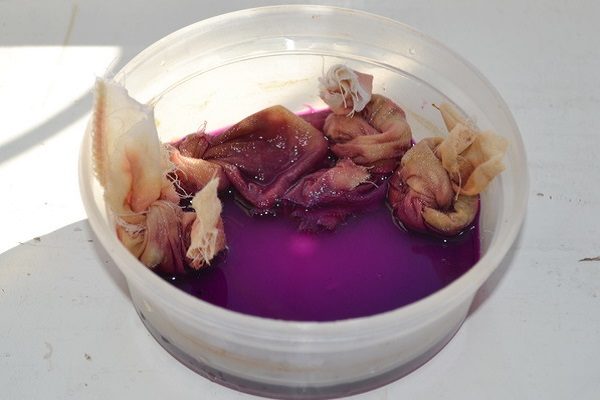
Prepared seeds are planted according to the scheme:
- distance between the rows is 45 cm;
- interval between the holes - 25 cm;
- depth grain immersion - 3 cm.
After planting the bed is covered with a film that is not removed until germination. In case of unfavorable weather, it is recommended to cover the appeared shoots at night, so that they do not freeze over in case of frosts.
To obtain an early harvest in cold climates, gardeners use a seedling method for planting cucumbers. To do this, prepared seeds (soaked in a solution of nitrophosphate) in late April or early May are sown in separate cups filled with a substrate of peat, humus and soil. You can also add a little wood ash and nitrophoska (1.5 tablespoons per bucket mix). After 4-5 leaves are formed on the seedlings, you can transfer them to the open ground.
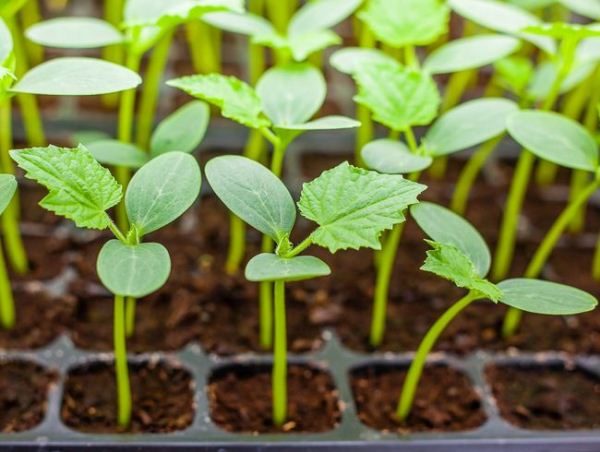
When transplanting seedlings on the beds need to carefully transfer each bush in the hole with the substrate. The root system is poorly developed in young shoots, with careless handling is easily damaged.
Grade care after planting
Timely weeding and loosening the soil contribute to the vegetative process, therefore should regularly remove weeds from the beds. Such a neighborhood can damage the roots of seedlings, provoke plant rot. Aeration is an integral part of normal care, lack of oxygen weakens the immune system of the culture, as a result of which it becomes vulnerable to disease.
Cucumbers are very fond of water, grade Baby is no exception. It is better to water the bushes with a weak pressure, a strong jet exposes the roots, as a result of which the plant dries out. The following types of watering are considered ideal:
- sprinkling;
- drip system.
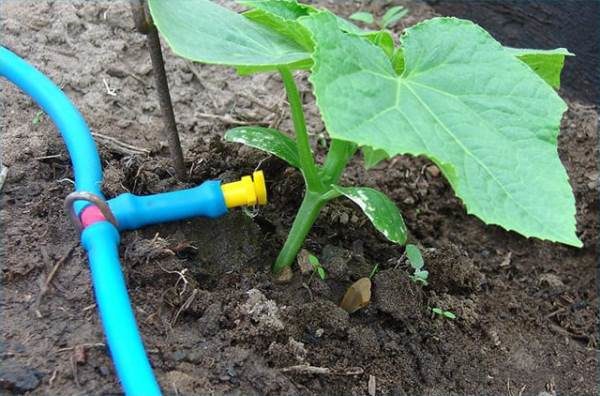
The frequency of procedures is 1 time per day, and in the absence of rain, moistening is carried out twice.
Early ripening varieties are characterized by intensive vegetation. This explains the need for frequent watering and the introduction of bait. The first portion is introduced before the flowering period, the next - every 10 days. As a food solution is used, which is prepared from the following components:
- a bucket of water;
- a teaspoon of urea, potassium sulfate, superphosphate;
- glass of mullein (mushy consistency).
An alternative to mullein is humane (1 tablespoon per bucket of water). Fertilizers are also suitable:
- Breadwinner;
- Fertility;
- Rodnichok;
- Ideal.
- Fertilizer humate potassium and sodium
- Ideal
- Rodnichok
Experienced gardeners warn newbies about the mistakes that are often made when growing bush cucumbers:
- When forming 6-7 leaves pinch off the tip on a branch to form another branch. In the case of cucumbers baby this procedure is considered to be superfluous.
- Reducing the distance between the holes when landing is not worth it, thickening provokes decay. In addition, thickets become attractive for pests.
- When growing seedlings need 1-2 weeks to transfer to outdoor ground to harden plants. In the opposite case, they will fall down on the beds in the first wind.
- Irrigation carried out under strict control of the soil. Prevent water stagnation in itotherwise it will lead to decay of the roots.
- No matter what a sustainable variety is not to diseases and pests, you should not plant seeds annually in the same place.
Diseases and their prevention
Often, cucumbers are affected by fungal diseases.This can occur due to contamination of the soil or seeds. As a preventive measure, it is recommended to soak the seed before planting. in a weak solution of potassium permanganate. They can also water the future beds. For this purpose, also suitable saline solution (1 cup per bucket of water).
The following diseases are considered the most dangerous for culture:
- gray rot;
- white rot;
- cucumber mosaic;
- olive blotch;
- root rot.
- Cucumber mosaic
- Olive spotting
- Signs of white rot on cucumbers
- Gray rot
- Root rot
Regular control, proper care and quick response when the first signs of plant damage are detected will help to protect the crop from death. It should be remembered that a healthy and strong bush is more protected from diseases than weak shoots. Strengthen the immune system need timely feeding. The nutrient composition of the soil saturates cucumbers with nutrients.
Harvesting and storage rules
On the 39-40th day after the emergence of shoots above the ground, it is time to collectharvest. The term falls on the first half of July. Intensive aging makes inspect the beds daily. Active fruiting occurs throughout 2 weeks. Harvested vegetables, if necessary, are stored in a cool place for 10 days. During this time, the fruits do not lose their qualities and presentation.
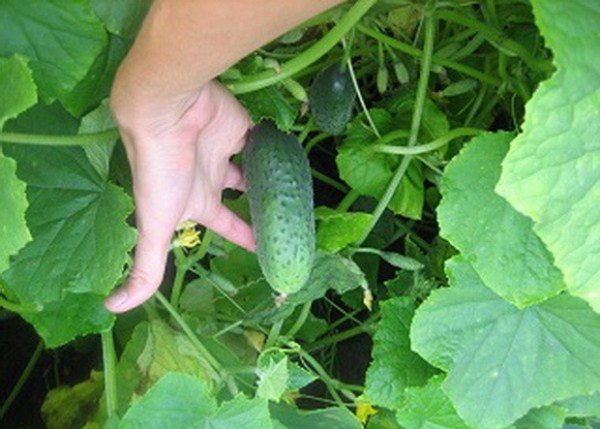
The safety of the harvest is influenced by the method of extracting the fruit from the whip. It is important to leave a small tail on the vegetable without damaging the skin.. Stalks at the same time do not need to turn, and even more sway around, to detect green grass.
Simple rules of care and disease resistance of cucumbers allow growing crops in regions with different climatic features. And early ripening guarantees a good harvest.
